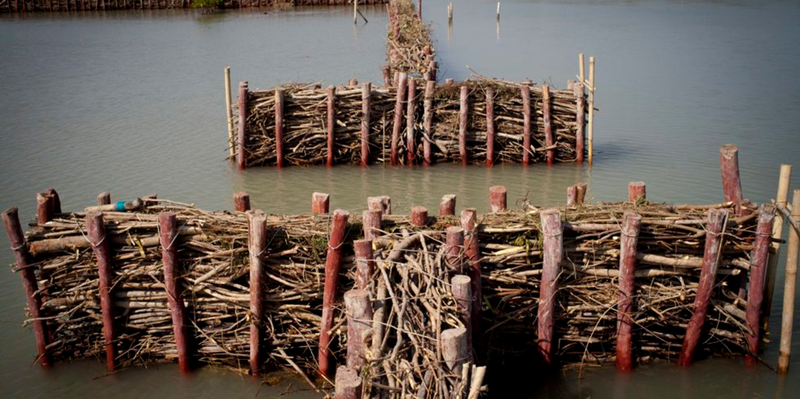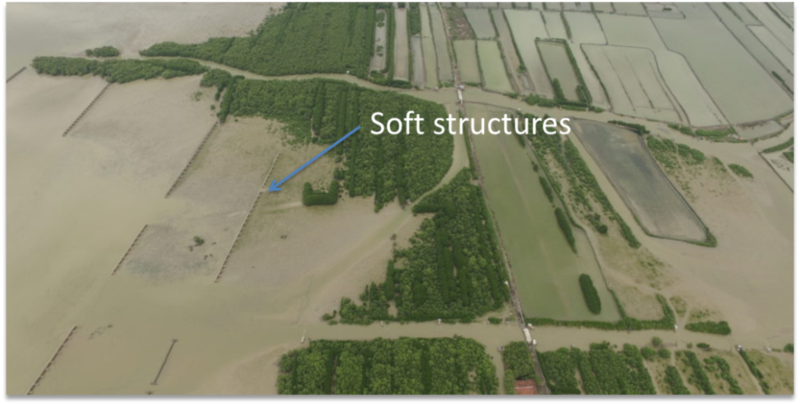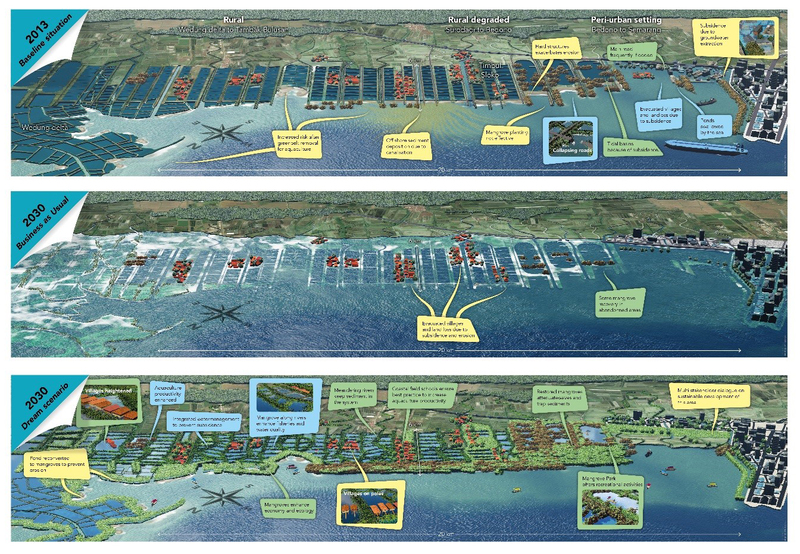Use for coast defence and local economy enhancement
In the tropics alluvial coasts are often muddy and covered with mangrove forests. In Demak (Central Java), a stretch of 20 km of coastline along the north coast of Java is facing severe erosion problems. These are mainly due to groundwater extraction -which causes land subsidence- and the removal of natural mangrove forests. In 2015, a large-scale BwN pilot was initiated, aiming to provide coastal security and supporting the revitalization of 6,000-plus ha of aquaculture ponds on a 20 km shoreline in the Demak district, enhancing the resilience of 70,000 vulnerable inhabitants. This is accomplished through the implementation of both social and physical coastal safety measures.
A low tech engineering solution was developed to restore the deteriorated mangrove green belt. Permeable structures made of bamboo and brushwood were constructed in front of the existing coastline. The permeable structures reduce the wave energy and provide sheltered areas where the sediment loaded waters can deposit the fine sediments. Mangrove seeds can then settle in the freshly deposited sediment layer, slowly restoring the mangrove green belt. Since the start of the project, some 1,500 m of structures have been constructed. Two years on, monitoring results show a net sedimentation of 30 cm at some locations behind the dams, whereas control sites show net erosion of 5 cm. Where the coastline is not yet eroded pond conversion is stimulated into mangroves in close participation with local communities. This project also enhances aquaculture productivity by introducing innovative techniques through farmer field schools. Lastly, through policy dialogues it is aimed to align various safety and development measures of national, provincial, district and municipal level for mutual reinforcement. Midway into the project, initial results show that restoration of a degraded muddy coasts is feasible using a low-tech solution. This pilot shows that social awareness is also a key consideration for sustainable coastal management.
Graphical information:



References/web links
- https://www.ecoshape.org/en/projects/building-with-nature-indonesia/
- Eekelen, E.M.M. van, Sittoni, L., Goot, F. van der and Nieboer H.E. (2017) “The Living Lab for Mud: integrated sediment management based on Building with Nature concepts”, CEDA Dredging Days 2017, Rotterdam.